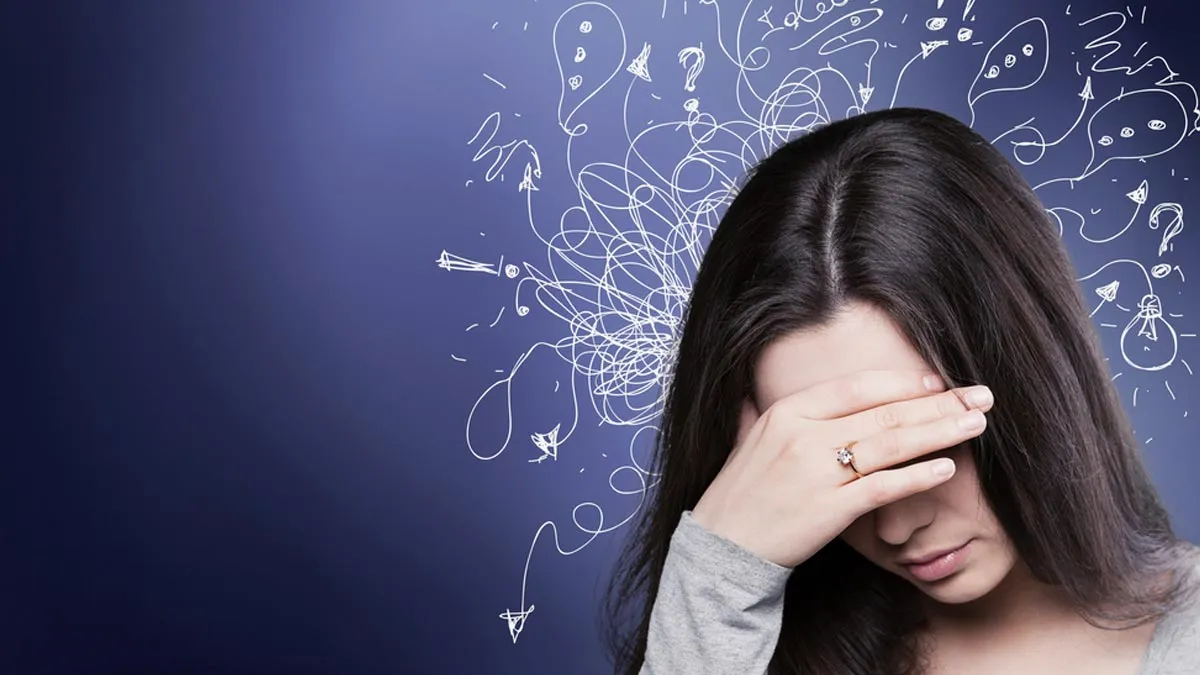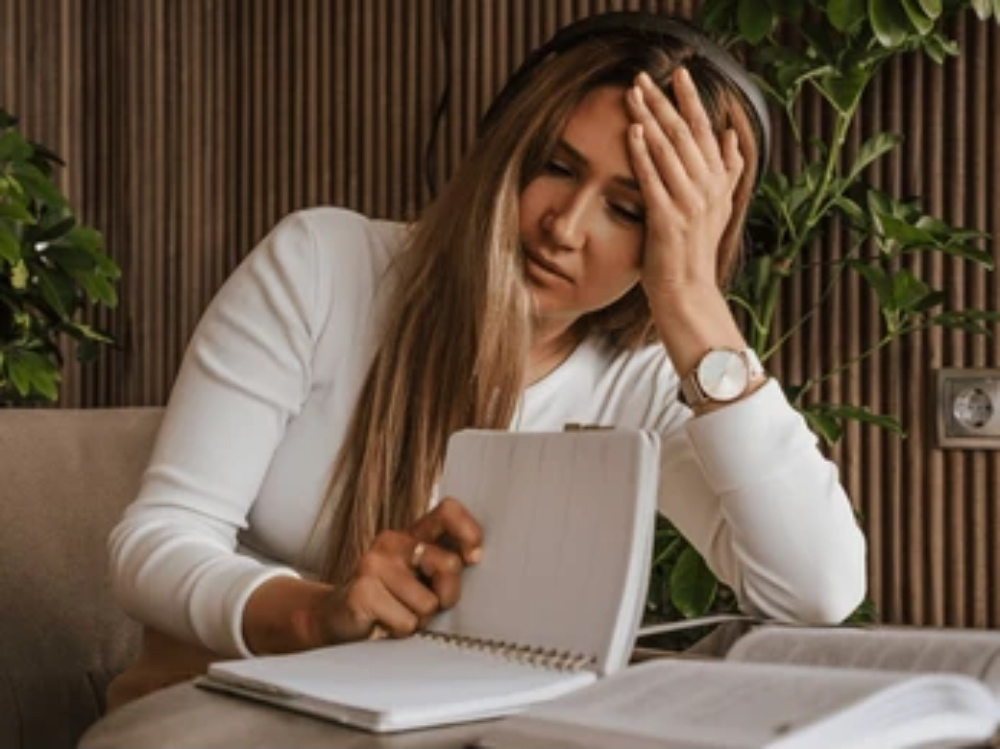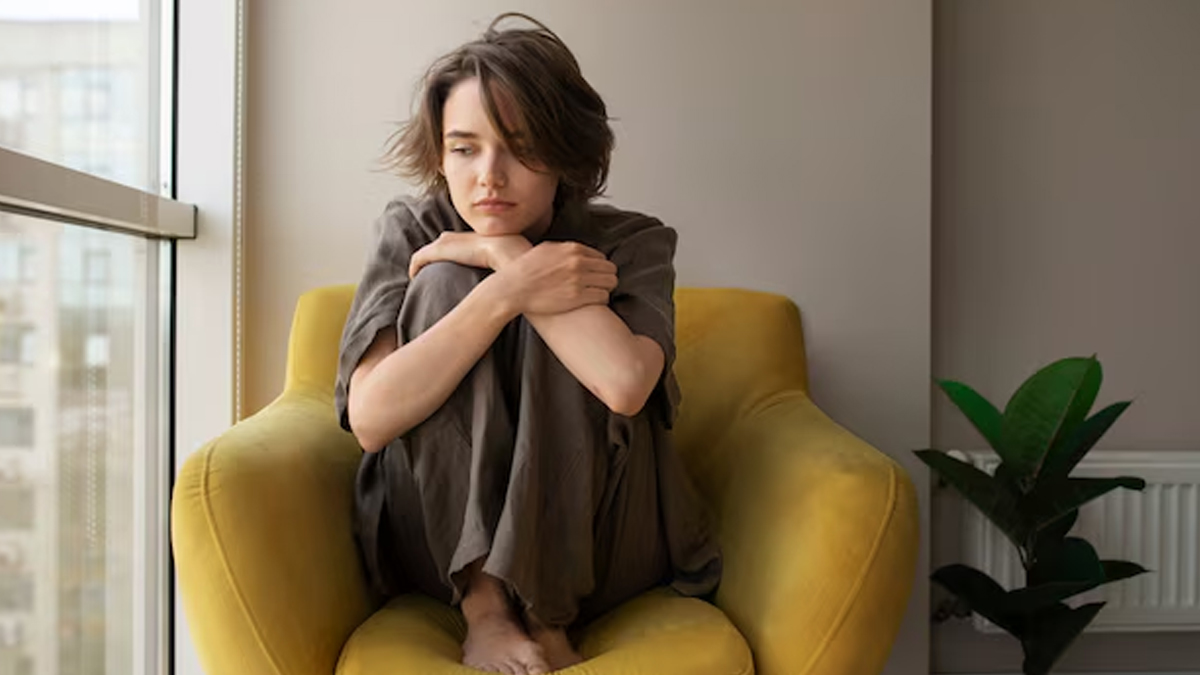
ADHD, or Attention-Deficit/Hyperactivity Disorder, is a condition that affects a person's behaviour, including their impulses and their ability to concentrate and control their energy. Hyperactivity is one of the most common signs, which can sometimes be accompanied by restlessness and difficulty staying focused. However, ADHD is not recognisable in everyone. In fact, in some people, it may be confused or mistaken for something more common and frequent, such as anxiety.
Table of Content:-
CHECK YOUR
MENTAL HEALTH

Anxiety, as we know, is a normal human emotion that comes with a feeling of nervousness and in response to an anticipated possible threat or danger. It is likely that the behavioural changes associated with ADHD may be interpreted as anxiety, which can delay diagnosis and necessary treatments.
Also Read: Internet Claims ADHDers Find Constant Ringing Sounds Calming for Better Focus: Expert Weighs In
Why Is ADHD Often Misdiagnosed In Women?

According to a 2019 study published in Frontiers in Human Neuroscience, ADHD affects approximately 7.2% of children under 18, but boys are diagnosed at significantly higher rates than girls, with male-to-female ratios ranging from 2:1 to 10:1.
Speaking with the OnlyMyHealth team, Dr Ravi Kumar C P, Consultant - Paediatric Neurology, Aster CMI Hospital, Bengaluru, says, “This issue arises from several factors, including the differing presentation of symptoms in women compared to men, societal expectations. Women may exhibit more inattentive symptoms rather than the hyperactive behaviours commonly associated with ADHD, leading to a lack of recognition and understanding of their condition.”
He further adds that cultural norms may also pressure women to adapt their behaviours, further obscuring the diagnosis. Consequently, these complexities contribute to the underdiagnosis and misdiagnosis of ADHD in females, necessitating a more nuanced approach to assessment and treatment.
Another study published in the journal PLOS One reported that among 69 participants, men had higher childhood ADHD symptom scores, but both genders reported similar current symptoms. While general alertness levels were comparable, women had slower and more inconsistent responses in behavioural control and working memory tasks, making more errors. These findings highlighted gender-specific cognitive differences in ADHD, particularly in memory and response inhibition, suggesting the need for further research on their impact on diagnosis and treatment.
ADHD Or Anxiety: How To Differentiate Between The Two?

Understanding the distinctions between the symptoms of ADHD and anxiety in women is crucial for accurate diagnosis and effective treatment.
“ADHD is characterised by persistent patterns of inattention, hyperactivity, and impulsivity, which may manifest as difficulty in maintaining focus, disorganisation, and restlessness. In contrast, anxiety symptoms often include excessive worry, fear, and physical manifestations such as increased heart rate or sweating, which can lead to avoidance behaviours,” explains Dr Kumar.
He adds that while both conditions can coexist and share overlapping features, such as difficulties in concentration, the underlying causes and manifestations differ significantly.
Also Read: Is It ADHD? Expert Explains Why Diagnosing It In Adults Becomes Difficult
Can ADHD And Anxiety Occur Simultaneously?
The co-occurrence of ADHD and anxiety is a major concern in the field of mental health, as individuals may experience symptoms of both conditions simultaneously, shares Dr Kumar, adding that this dual diagnosis can complicate the clinical picture, as the symptoms of ADHD, such as inattention and impulsivity, may exacerbate feelings of anxiety, while anxiety can further hinder the ability to focus and manage daily tasks.
Effective management strategies for individuals facing both ADHD and anxiety typically involve a comprehensive approach that may include behavioural therapies, medication, and lifestyle modifications. Cognitive-Behavioural Therapy (CBT) has shown promise in addressing the cognitive distortions associated with anxiety, while stimulant or non-stimulant medications may be prescribed to help regulate attention and impulse control.
Additionally, incorporating mindfulness practices, regular physical activity, and structured routines can contribute to improved emotional regulation and overall well-being for those navigating these intertwined challenges.
Common Signs Of ADHD That Are Often Mistaken For Anxiety

Some of the signs of ADHD in women that frequently overlap with symptoms of anxiety, leading to potential misdiagnosis, include:
- Difficulties in maintaining focus
- Experiencing chronic disorganisation
- Struggling with time management, which can be misconstrued as anxiety-related issues
- Emotional dysregulation characterised by heightened sensitivity to stress and mood fluctuations
- Displaying restlessness and a tendency to be easily overwhelmed
Given that ADHD is more difficult to diagnose in women, it is important to note that women with undiagnosed ADHD may struggle with organisation, time management, and maintaining focus, which can hinder their performance in both personal and professional settings.
This lack of diagnosis can result in feelings of inadequacy, anxiety, and depression, as they may perceive themselves as failing to meet societal expectations or personal goals. Furthermore, the absence of appropriate coping strategies and support can exacerbate stress levels, leading to a cycle of frustration and emotional turmoil.
Treatment Options For ADHD And Anxiety
According to Dr Kumar, there are a combination of pharmacological interventions, such as stimulant medications and non-stimulant options.
Additionally, behavioural therapies, psychoeducation, and coaching tailored to the unique challenges faced by women can be effective.
In contrast, treatments for anxiety often prioritise CBT and may include Selective Serotonin Reuptake Inhibitors (SSRIs) as a first-line pharmacological approach.
The distinction lies in the underlying mechanisms and symptoms of each condition; while ADHD treatments focus on enhancing attention and reducing impulsivity, anxiety treatments aim to alleviate excessive worry and fear, highlighting the necessity for tailored therapeutic strategies for each disorder, Dr Kumar concludes.
[Disclaimer: This article contains information provided by an expert and is for informational purposes only. Hence, we advise you to consult your professional if you are dealing with any health issue to avoid complications.]
Also watch this video
How we keep this article up to date:
We work with experts and keep a close eye on the latest in health and wellness. Whenever there is a new research or helpful information, we update our articles with accurate and useful advice.
Current Version
